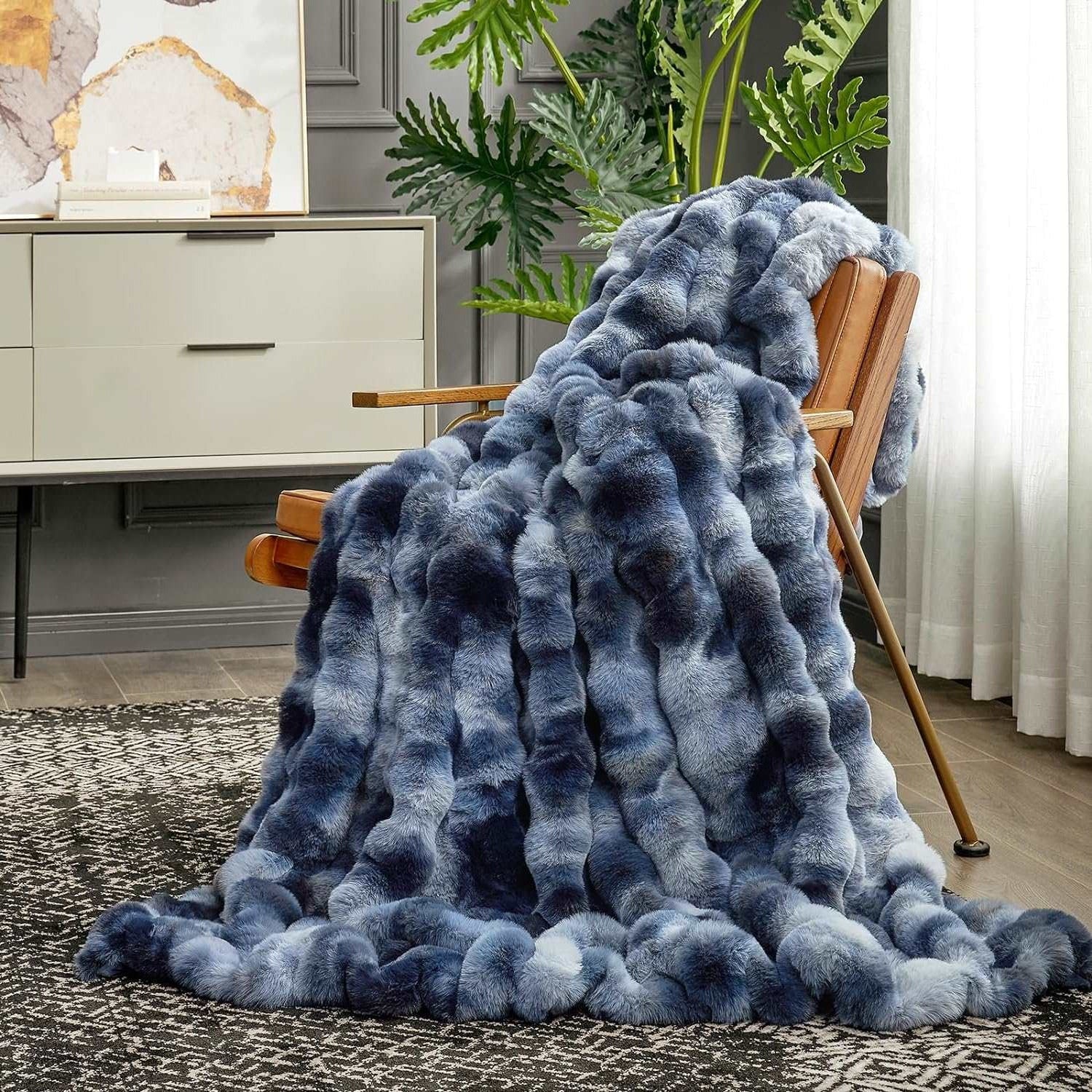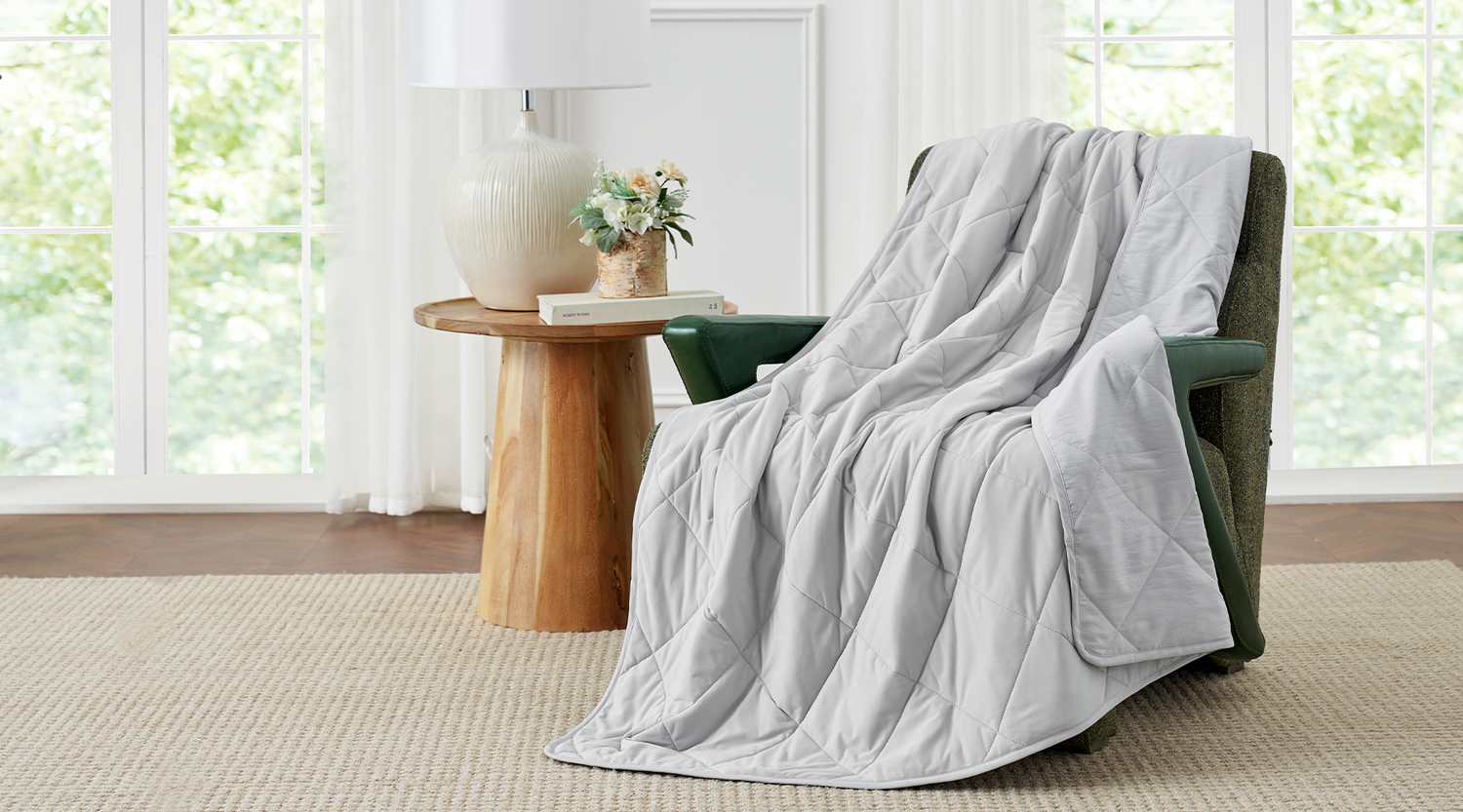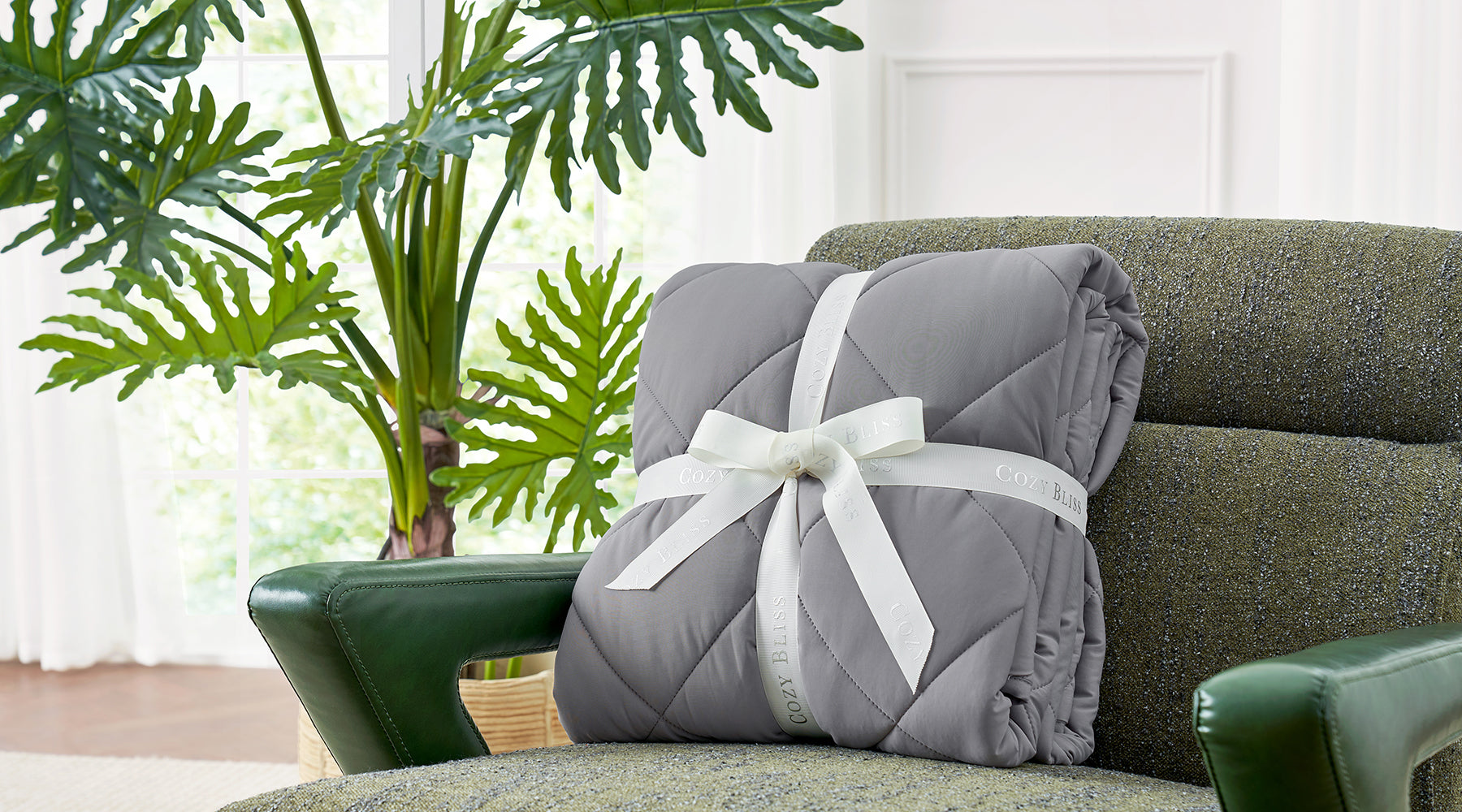Hot summer nights can make sleep difficult as you toss and turn, turning your pillow over and over in an attempt to cool down. Not sleeping well doesn't only make you tired the following day—it affects the way you feel and function. You can sleep more comfortably even in hot weather with some simple changes to your bedding. A cooling mattress maintains a comfortable body temperature, light blankets stave off overheating, and breathable pillowcases keep your head and neck cool and not hot and stuffy. These three bedding improvements will enable you to get the rest you need during the summer.
Summer Essential #1: The Foundation - Cooling Mattress
Your mattress is the basis of your rest, especially on warm summer nights. A cooling mattress can actually be the difference between waking refreshed or exhausted when it's sweltering outside.
How Cooling Mattresses Work?
Unlike standard mattresses that trap body heat, cooling mattresses use specialized materials and designs to help maintain comfortable sleeping temperatures all night long.
Open-Cell Foams and Ventilated Designs Increase Airflow
Natural latex and modern foams contain thousands of tiny interconnected air pockets that allow heat to escape rather than build up around your body. Advanced mattresses also include vertical air channels and perforations that create pathways for warm air to flow away from your body and fresh air to circulate throughout the mattress core.
Cooling Gels Absorb and Disperse Body Heat
Many mattresses incorporate cooling gel particles directly into their foam layers. These gels work like mild ice packs, drawing excess heat away from your body and distributing it throughout the mattress. Look for mattresses with gel in multiple layers rather than just the top surface for more effective cooling throughout the night.
Temperature-Regulating Materials Keep Surface Cool to Touch
Premium cooling mattresses use phase change materials (PCMs) in their covers and top layers. These specialized substances absorb heat when you're warm and release it when you cool down, maintaining a consistently comfortable surface temperature. These materials feel noticeably cool when you first touch them, even on hot nights.
Types of Cooling Mattresses to Consider
As you shop for a cooling mattress, you'll find a number of different categories with their own special cooling features.
Innerspring with Breathable Layers
Traditional innerspring mattresses with proper comfort layers can be extremely cool. The coil systems naturally allow for air exchange through the mattress. Choose models with natural fiber tops like cotton or wool, which wick moisture and allow for heat dissipation. Some newer innerspring models include cooling gel in their pillow top or euro top for better temperature regulation.
Latex Mattresses
Natural latex mattresses stand out for their cooling properties. The material's inherent structure allows excellent airflow, and latex doesn't retain heat the way traditional memory foam does. All-latex mattresses or those with substantial latex comfort layers provide a responsive feel while helping you stay cool. Many sleepers find that latex offers an ideal balance of support, comfort, and temperature regulation.
Hybrid Mattresses
Hybrid mattresses combine the superior of innerspring and foam constructions. Coil base promotes airflow, and comfort layers chosen for pressure relief while avoiding heat build-up. Ideal cooling hybrids incorporate breathable covers, cooling gel-infused comfort layers, and coil systems for enhancing airflow. These are ideal for couples who share different temperatures.
Gel-Infused Memory Foam Mattresses
For individuals who like memory foam's pressure-relieving characteristics but hate its heat retention, gel-infused mattresses are a decent compromise. These mattresses infuse cooling gel within their foam layers to absorb and disperse body heat. The superior models use gel infusions in conjunction with open-cell foam structures and breathable surfaces for complete cooling.
Tips for Choosing the Right Cooling Mattress
Choosing the best cooling mattress is all about finding a balance between your temperature needs and other sleeping styles.
Select Firmness Based on Sleep Position
Side sleepers need softer mattresses (4-6 on a 10-point scale) to support pressure on the hips and shoulders. Back and stomach sleepers prefer firmer support (6-8 firmness) to keep the spine in the correct position. Get a mattress that offers cooling technology along with your personal support needs.
Read Reviews Using Keywords "Hot Sleeper," "Cooling," and "Summer"
Filter online reviews to focus on comments from hot sleepers or those in warm climates. Specifically search for terms like "hot sleeper," "night sweats," "cooling," and "summer" to find relevant experiences. Pay attention to reviews left during summer months for the most accurate cooling performance feedback.
Ensure Generous Trial Period with Hassle-Free Returns
Never purchase a cooling mattress that does not include a minimum of a 100-night trial period, preferably summer months. Ensure returns truly are free of surprise pickup and restocking fees. Check to find out if you need to try the mattress for some minimum amount of time (typically 30 days) before returning, because your body will have adjusted to a new sleep surface.
Summer Essential #2: Lightweight Comfort - Cooling Blanket

While your mattress forms the foundation of sleep, the right blanket directly affects your comfort throughout hot summer nights.
How Cooling Blankets Work?
Unlike heavy comforters, cooling blankets use specific materials and construction to keep you comfortable in warm weather.
Natural Fibers Allow Heat to Escape During Sleep
Cooling blankets use breathable materials like cotton, linen, and bamboo that allow air to circulate freely. These natural fibers create pathways for heat to escape rather than trapping it against your body.
Moisture-Wicking Materials Keep Skin Dry
Quality cooling blankets pull moisture away from your body, allowing it to evaporate quickly. This wicking action prevents the clammy feeling caused by night sweats, keeping you dry even on humid nights.
Lightweight Weaves Provide Comfort Without Excess Warmth
Summer blankets use looser weaves and thinner construction that offer just enough coverage for comfort without overheating. Many cooling blankets weigh less than 3 pounds, compared to 10+ pounds for winter comforters.
Types of Cooling Blankets
The market offers several effective cooling options for different preferences and climates.
Cotton
Cotton blankets with percale or waffle weaves maximize airflow while offering soft comfort at reasonable prices. They perform best in moderately warm environments with average humidity.
Linen
Linen fabric excels in high-heat, high-humidity conditions. Its unique structure allows more airflow than cotton while absorbing up to 20% of its weight in moisture without feeling damp. Though more expensive, quality linen blankets often last for many years.
Bamboo
Bamboo-derived fabrics combine exceptional softness with impressive cooling properties. These blankets wick moisture effectively while remaining hypoallergenic and naturally resistant to odors.
Tencel/Lyocell
Tencel blankets provide a uniquely smooth feel while regulating temperature consistently. They absorb moisture while remaining dry to the touch, making them ideal for those who dislike any hint of dampness.
Specialty Cooling
For severe hot sleepers, specialty blankets incorporate advanced technologies like Q-Max > 0.4 cooling fabric, phase change materials or cooling gel fibers. These actively absorb body heat throughout the night rather than simply allowing airflow.
Tips for Choosing the Best Cooling Blanket
Finding your ideal summer blanket requires considering your specific needs.
Match Blanket Weight to Your Local Climate
Choose lightweight blankets (300-400 GSM) for mild summer temperatures and ultra-lightweight options (under 300 GSM) for hot climates. For extremely hot environments, consider specialized cooling blankets or simply cool flat sheets.
Examine Weave Pattern for Airflow
Open weaves like waffle, gauze, or loose knits provide significantly better airflow than tight, dense weaves. Hold the blanket up to light; if you can see through it, it will likely provide better cooling.
Consider Texture and Feel Preferences
Natural fibers typically feel cooler initially but texture preferences vary widely. Some people prefer linen's slight texture while others favor bamboo's silky smoothness—there's no universally "best" option for everyone.
Summer Essential #3: Keeping Your Head Cool - Cooling Pillowcases (and Pillows)
The final component of your summer sleep system might be the most crucial. Your head and neck contain many blood vessels close to the skin's surface, making them natural heat regulators for your entire body.

Why Head Temperature Affects Sleep Quality
Your brain needs to stay cool to maintain healthy sleep cycles. When your head and neck overheat, core body temperature rises, triggering wakefulness. The standard pillow and pillowcase combination can trap heat and moisture around your head, creating a hot spot that disrupts sleep even when the rest of your body remains cool. Addressing this specific area can significantly improve your summer sleep quality.
Pillowcase Fabrics for Summer Comfort
Many of the same breathable, moisture-wicking materials that work well for cooling blankets are excellent choices for pillowcases. However, there are important differences when these materials are used against your face and head.
Best Cooling Options for Different Needs
For sensitive facial skin, bamboo and Tencel pillowcases offer the smoothest feel while effectively managing moisture. Cotton percale provides excellent breathability at lower cost but may not feel as luxurious. Specialty cooling fabrics with phase change materials provide the most immediate cooling sensation for those who struggle with significant nighttime overheating.
Special Considerations for Pillowcases
Pillowcase cooling concerns differ from blankets because they make direct contact with your face and hair. Look for pillowcases without synthetic dyes or harsh chemicals. Thread count matters differently too—for pillowcases, aim for 200-400 for cotton (percale weave) and 300-500 for bamboo or Tencel to balance smoothness with breathability.
How to Select the Right Cooling Pillowcase
Finding your ideal cooling pillowcases requires considering several practical factors..
Choose Material Based on Skin Sensitivity and Climate
Select bamboo or Tencel for hot, humid environments and sensitive skin. Cotton works well for moderate climates and normal skin types. Specialty cooling fabrics provide the most relief for extreme heat or severe night sweats.
Check Thread Count and Weave for Balance of Durability and Airflow
For cotton pillowcases, look for thread counts between 200-400 with percale weaves for maximum breathability. For bamboo and Tencel, thread counts between 300-500 provide the best balance of cooling and durability. Avoid sateen weaves and high thread counts (600+) as these reduce airflow.
Verify Size and Closure Style Fit Your Pillows Perfectly
Ensure the pillowcase dimensions match your pillow size—standard (20"×26"), queen (20"×30"), or king (20"×36"). Look for envelope closures or hidden zippers that keep pillows fully covered all night. A proper fit prevents bunching and maximizes the cooling surface area in contact with your skin.
Sleep Better Tonight With Cooling Bedding!
Cooling bedding where temperature matters most. All three together help the body's own cooling process, enabling you to sleep comfortably through the hottest months and wake up revitalized.




Dejar un comentario
Este sitio está protegido por hCaptcha y se aplican la Política de privacidad de hCaptcha y los Términos del servicio.